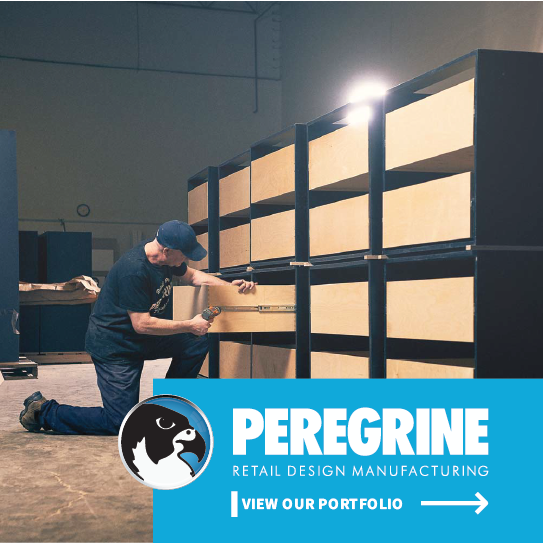How Canadian Retailers Can Overcome the Challenges of the Forces that is Ecommerce
/By Rich Smith
No one would deny that the face of retail is changing due to the forces of e-commerce. What we may not fully grasp yet is how that pace of change is accelerating and what it will mean for many industries in even a relatively short time horizon of five to 10 years.
The truth is that technologies such as virtual reality, 3D printing, nanotechnology, and ever-expanding communications bandwidth are laying the groundwork for the next major shift in retail.
The big idea and driver of the Industrial Revolution was that value could be created through industrializing manufacturing and distribution. Today, less and less value is being created by manufacturing. Almost anyone can make anything and the cost of manufacturing keeps decreasing. Distribution is the next domino to fall. With virtual reality, we can experience places and things without the cost or effort of traveling to them. With 3D printing we can “print” complex products at home without the cost of going to a store to buy them or having them shipped to us.
PHOTO: VIA JUSTCREATIVE.COM
When you boil it down then, the true value of any product is not in its manufacturer or distribution. A product’s real value can be summed up by four things: Idea, Design, Emotion, and Cause.
The first source of value is the idea that created the product, the concept, thought and intellectual capital that went into it. Next is its design. How is the idea put together? What are the specific parts and dimensions? As human beings, we are driven much more by our emotions than by reason. Neuroscientists and psychologists know that most often consumers are motivated to buy a product because of the impulse it makes them feel, and then try to rationalize it to themselves later. Last is its cause. This is the reason why a product exists. Does it serve some higher purpose? What is the story behind its conception? What is the change it, or its creator, seeks to make in the world?
In the near future, will you be able to get your martini through a Star Trek-like replicator? The short answer is yes. Gin is entirely made up of carbon, hydrogen, and oxygen molecules, even including the botanical compounds in it! These are three ubiquitous elements that are present in all organic matter and could easily be supplied in raw form to your home-based “replicator” or 3D liquid “printer” It’s only a matter of arranging them in the right combination and viola! You have a gin martini dispensed from your kitchen’s liquid printer. Want to taste the martini from the Bar Hemingway inside the Ritz Carlton in Paris? It’s as easy as purchasing the licensed formula and having your liquid printer produce it for you. There is no need to travel to Paris.
So why are many successful e-commerce companies investing in brick and mortar locations? It comes down to experiences. We like to experience brands and products before we buy them. It gives us a sense of connection and trust, increasing the emotional value we receive. Until we all have another Star Trek innovation—the Holodeck or full sensory virtual reality machine—in our homes, we will continue to travel to experience products. This is why high-end brands such as Gucci, Cartier, and Tiffany continue to build boutique retail locations, sometimes even competing with themselves in large cities.
GUCCI’S NEW YORKDALE BOUTIQUE PHOTO: GUCCi
The service industry is also not immune to these forces. For example, retail banks provide many financial services to consumers where no physical product is involved. There was a time when you had to travel to a branch to complete these transactions. Retail branch location—in other words, distribution—was a source of value and competition in the industry. However, with the advance of e-commerce, there is very little need to travel to a branch anymore. Almost all transactions can be completed electronically and thus banks have been closing branches for years. Nonetheless, to create a greater emotional connection with customers, some banks such as Capital One with its cafes, are creating non-branch branches where customers can experience the bank’s brand.
As a business leader in the retail, service, travel, and hospitality industries, how do you prepare for these trends? It comes back to IDEC. Think carefully about the value that you really provide if the limitations of distribution or place and manufacture were removed. What is the Idea, Design, Emotion, and Cause that you can deliver to your customer and how can you maximize those elements to differentiate yourself from your competition? That will be the basis of your success in the retail world of the future.
Based in Philadelphia, Rich Smith is CMO with Chief Outsiders. He works with companies to differentiate, drive customer loyalty, and unlock profitable growth. More info at www.chiefoutsiders.com.

















![L.L.Bean Continues Canadian Expansion with 1st Toronto Store [Photos]](https://images.squarespace-cdn.com/content/v1/529fc0c0e4b088b079c3fb6d/1603908990197-KDT3UNTEHFBFJF5FJ36N/L.L.Bean_Don_Mills_8.jpg)



![Retail-insider-NRIG-banner-300-x-300-V01-3[2].jpg](https://images.squarespace-cdn.com/content/v1/529fc0c0e4b088b079c3fb6d/1593476525034-QRWBY8JUPUYFUKJD2X9Z/Retail-insider-NRIG-banner-300-x-300-V01-3%5B2%5D.jpg)
![Retail-insider-NRIG-banner-300-x-300-V01-2[2].jpg](https://images.squarespace-cdn.com/content/v1/529fc0c0e4b088b079c3fb6d/1593476491497-W6OZKVGCJATXESC9EZ0O/Retail-insider-NRIG-banner-300-x-300-V01-2%5B2%5D.jpg)
![Retail-insider-NRIG-banner-300-x-300-V01-4[2].jpg](https://images.squarespace-cdn.com/content/v1/529fc0c0e4b088b079c3fb6d/1593476508900-TJG5SNQ294YNOCK6X8OW/Retail-insider-NRIG-banner-300-x-300-V01-4%5B2%5D.jpg)